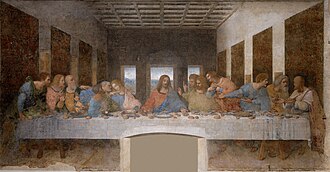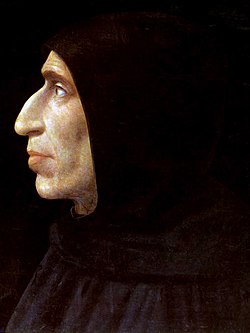This article needs additional citations for verification .(November 2025) |
The decade of the 1490s in art involved some significant events.
This article needs additional citations for verification .(November 2025) |
The decade of the 1490s in art involved some significant events.
The Renaissance is in full swing during the 1490s, and Leonardo da Vinci is painting in realistic, chiaroscuro style. In music, many new musical styles are being created, including the motet and madrigal, replacing an emphasis on chanting (and simple melodies) with polyphony and homophony. Christopher Columbus's explorations of the New World captivates the artistic imagination of both artists and the public.

